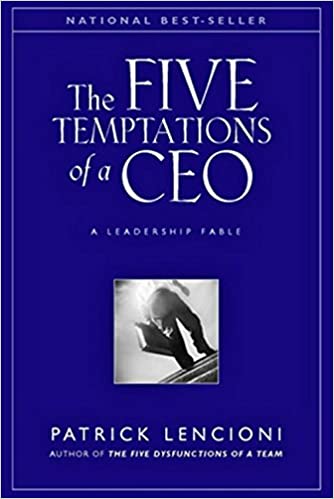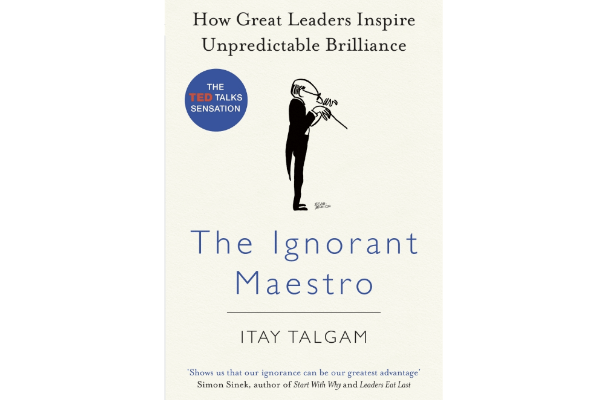If you’ve ever picked up Patrick Lencioni’s The Five Dysfunctions of a Team, you already know he has a unique way of using storytelling to convey deep leadership insights. In The Five Temptations of a CEO, Lencioni does something similar, but this time he flips the script. Through a simple yet powerful fable, he explores what not to do as a CEO, and by extension, as a leader at any level.
At FocusU, we’ve often found that the greatest learnings come not just from new ideas, but from recognizing our own blind spots. This book is a mirror – it helps us reflect on the very human tendencies that often derail even the most talented leaders.
Over the years, in our conversations with CEOs, CHROs, and senior leaders across industries, we’ve noticed something interesting: the challenges they face often have little to do with skills and strategies and more to do with mindset, ego, and interpersonal dynamics. And that’s exactly where this book strikes a chord.
Let’s unpack the five temptations that Lencioni outlines, while also sharing some observations from our own experience facilitating leadership interventions and coaching engagements across diverse organizations.

1. Temptation #1: Choosing Status Over Results
Table of Contents
“It’s better to risk losing your title than to risk looking like a failure.”
In our work with leaders, we often hear this in subtle ways: leaders who spend too much energy managing perceptions – crafting the perfect narrative, seeking external validation, or holding on tightly to hierarchy.
Lencioni warns against valuing one’s status or ego above the actual performance of the company. A CEO (or any leader) must evaluate their success based on the collective results of the organization, not personal accolades or symbolic achievements.
In our experience, teams thrive when leaders are focused on outcomes over optics. When employees see leaders taking ownership of results rather than their own image, it fosters a culture of accountability across all levels.
L&D takeaway: Training programs for senior leaders should include a focus on self-awareness and humility. Encourage reflective exercises where leaders examine how their need for significance might be overshadowing the team’s true goals.
2. Temptation #2: Choosing Popularity Over Accountability
“You can’t hold someone accountable and be liked all the time.”
One of the most common challenges we hear from first-time managers and seasoned executives alike is the discomfort around tough conversations. Leaders often avoid holding their teams accountable in fear of damaging relationships.
Lencioni emphasizes the need to separate personal validation from professional responsibility. As leaders, caring for your team doesn’t mean shying away from setting clear expectations and following through.
We’ve observed that the best leaders build trust because they hold people accountable not despite it. Accountability, when delivered with fairness and consistency, actually deepens respect.
L&D takeaway: Organizations must build psychological safety while also emphasizing performance. Leadership development programs should provide practice in difficult conversations and feedback delivery, along with frameworks for fair accountability.
3. Temptation #3: Choosing Certainty Over Clarity
“It’s not about being right. It’s about being clear.”
We’ve seen leadership teams get stuck in “analysis paralysis”- looping through endless discussions, seeking perfect answers, and delaying decisions. This often happens when leaders prioritize intellectual correctness over organizational momentum.
According to Lencioni, CEOs must resist the need for complete certainty and instead provide clarity even when the full picture isn’t available. Clarity creates alignment and forward movement.
In our training engagements, we’ve found that teams perform better when they receive timely, even if imperfect, communication from their leaders. Employees prefer direction over delay.
L&D takeaway: Embed decision-making under uncertainty as a core leadership skill in training programs. Help leaders learn to move forward with 70% information, while being transparent about evolving circumstances.

4. Temptation #4: Choosing Harmony Over Productive Conflict
“Meetings without conflict are often meetings without resolution.”
At FocusU, we’ve helped many organizations shift from superficial agreement to real, constructive dialogue. One of the biggest barriers to team effectiveness is a false sense of harmony – where difficult topics remain unspoken to maintain politeness.
Lencioni argues that great teams engage in healthy conflict. Leaders must create environments where differing views are welcomed, not feared. Avoiding conflict only causes issues to fester beneath the surface.
We’ve noticed that when leaders openly invite dissent and demonstrate comfort with disagreement, innovation tends to flourish. Teams feel safer contributing ideas, even if they challenge the norm.
L&D takeaway: Facilitate training modules that focus on managing conflict constructively. Use simulations and role-plays to help leaders and teams practice speaking up, disagreeing respectfully, and finding common ground.
5. Temptation #5: Choosing Invulnerability Over Trust
“You can’t build trust without being vulnerable.”
This is perhaps the hardest temptation to overcome and also the most transformative. We’ve seen leaders transform teams simply by sharing their own struggles, failures, and learnings.
Lencioni highlights how many leaders fear vulnerability. They worry it will make them seem weak or less credible. But in truth, vulnerability builds trust – when leaders show they’re human, it creates connection.
In our experience, vulnerability is the gateway to authenticity. When leaders let down their guard, others feel empowered to do the same. This is the foundation of a high-trust, high-performance culture.
L&D takeaway: Leadership development should include emotional intelligence, self-awareness, and storytelling. Encourage leaders to share their personal journey not just their successes, but also their lessons from failure.
Why This Book Still Matters Today
Even though The Five Temptations of a CEO was first published in 1998, its insights feel even more relevant in today’s workplace. The pandemic, the rise of hybrid work, and the emphasis on well-being have forced leaders to reexamine their behaviors and priorities.
At FocusU, we’ve seen a growing interest in leadership authenticity, emotional safety, and value-based decision-making. This book aligns beautifully with these trends. It serves as a powerful diagnostic tool for leaders to reflect on how they’re showing up – and how they can evolve.
Whether you’re a CEO, a senior leader, or someone preparing for leadership, this book offers a quick yet lasting dose of wisdom. And if you facilitate leadership programs, it’s a great addition to your reading list or even a base for a book club discussion.
Final Thoughts
The Five Temptations of a CEO is not just about CEOs. It’s about all of us who step into positions of influence – whether we’re leading a team, a department, or a cross-functional initiative.
As L&D professionals, HR leaders, or managers, we have the opportunity to help leaders at every level become more self-aware, grounded, and effective. By addressing these five temptations head-on, we can enable individuals and organizations to build cultures that are more resilient, purpose-driven, and human.
Let’s remember: leadership is less about having all the answers, and more about asking the right questions, admitting when we’re wrong, and creating the space for others to thrive.
In closing, we leave you with one question this book invites us to ask:
“What are you tempted by and what is it costing your team?”











